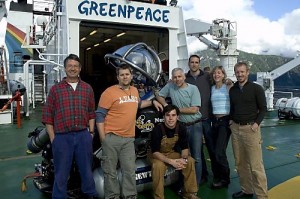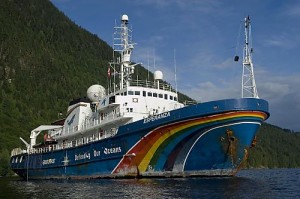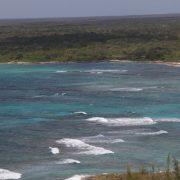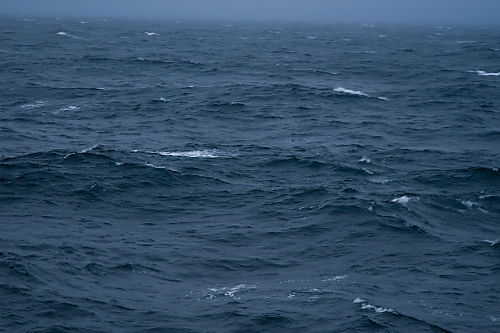Beneath a British Columbian Waterfall?
Greetings from aboard the Greenpeace ship, M/V “Esperanza”! We’re anchored beneath a beautiful waterfall in one of British Columbia’s magnificent “fjords” to prepare for this summer’s intensive expedition to the Bering Sea.
Greenpeace’s largest ship, the Esperanza, will be visiting the Bering Sea in Alaska for most of the summer.The expedition will be using manned submersibles and an ROV to survey Zhemchug and Pribilof Canyons, specifically to map and document deepwater corals living at depths of more than 1,000 feet. These corals, some hundreds of years old, are vital components of a healthy marine ecosystem. Unfortunately, these corals are at great risk, ending up in trawling nets as “bycatch.”
Many tons of corals have been destroyed by this indiscriminant fishing gear. It is our hope that the data collected on this expedition will help advance our scientific understanding of these deepwater coral communities and be helpful to policy makers as well, leading to more effective conservation measures. A Scientific Advisory Panel is advising the project, including representatives from Scripps, the Smithsonian, the St. George Island Ecosystem Office, MCBI, Oceana, Texas A&M, and Nova Southeastern. I’ve been asked to serve as a submersible pilot and scientific advisor.

Sub pilots for the Bering Sea Expedition (pictured with DeepWorker submarine) during preparations in British Columbia, Canada aboard M/V Esperanza (left to right): Clive, Kenneth, Danny, David, John, Michelle, Timo
We’re using two DeepWorker submarines, 1-person mini-subs, untethered, that are capable of a depth of up to 2,000 feet. The sub is equipped with high-definition video, a manipulator arm for collecting samples, sonar for navigation and is always in contact with the surface using through water (acoustic) communications. DeepWorker uses CO2 scrubbers, similar to what’s used in spacecraft, providing up to 80 hours of life support. A typical dive lasts 4-6 hours.
The expedition is scheduled to begin in Dutch Harbor, Alaska (in the Aleutian Island chain) in mid-July. We are spending this week aboard ship near Vancouver training additional pilots, planning the expedition, and preparing the ship and crew for work in the Bering Sea.
Thanks to a satellite uplink, I am able to access the Internet when there are no mountains blocking the ship’s view of the satellite. The ship is very comfortable, excellent food, and my personal favorite amenity, an espresso machine.
Yesterday we practiced launch and recovery operations. Today we’re working through emergency drills at shallow depth. Our ship is being guarded by a fleet of four Canada geese who dutifully orbit the vessel every 5 minutes. Lots of harbor seals are also checking us out. Spotted a double rainbow on Saturday — this is considered very good luck, especially aboard a rainbow-adorned Greenpeace ship.




Leave a Reply
Want to join the discussion?Feel free to contribute!